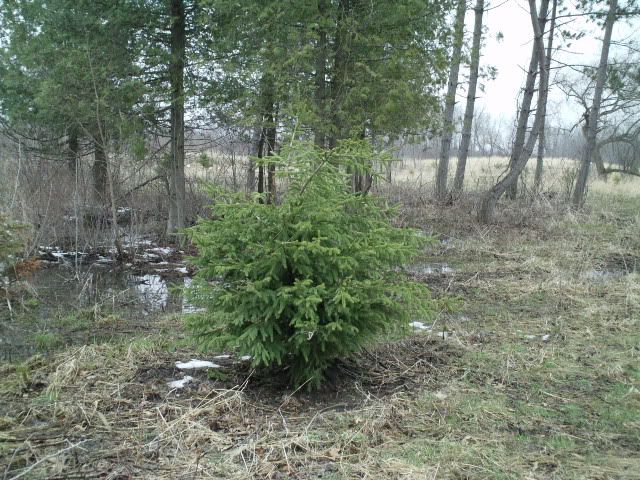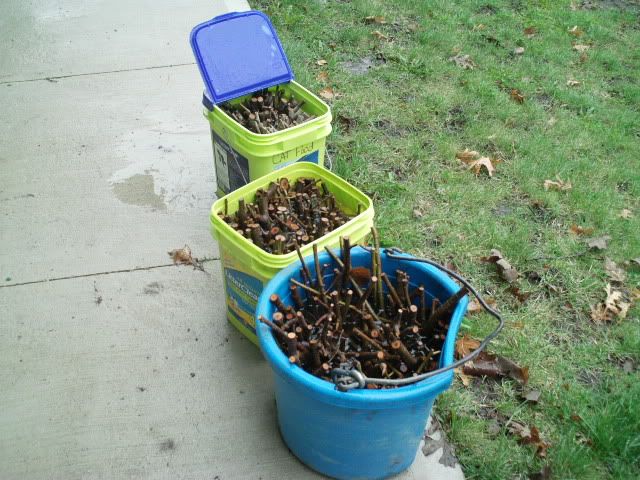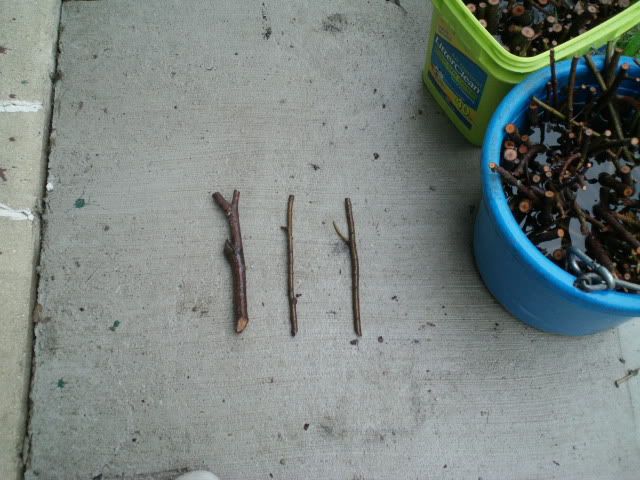Sure different looking country then SE Iowa! My cuttings from Big Rock trees are doing well so far. :way:
I planted some Chinese Chestnuts and Sawtooth oaks for a landowner the other day, hoping to guide him to better native options next year but one thing is certain he will have plenty of diversity in his plantings!
These seedlings were perfect for the planting bar and the following shows how to use a planting bar and properly close the hole not only at the top but close off any air pockets below as well.
Be sure not to push the seedling to far down the hole
nor to high so that roots might be exposed
With seedling in place insert the bar in front
and rock it backward to close the bottom of the hole
and then back to close the front
the repeat the process again
to be certain that plenty of soil is firmly pushed against the seedling roots
Then pack the soil firmly around the top around seedling
Larger rooted seedlings can be challenging for a planting bar so keep in mind you may need a larger spade or shovel with older seedlings.
We've established fruit orchards in and around main food plots so these trees are the beginnings of "nut/acorn" orchards also planted immediately adjacent to food plots in any odd/open/hinged areas we can utilize.
I flagged each tree
and then went back and tubed them
These pics give you some idea of the under utilized areas we took advantage of
The area in fescue will become a food plot and the shingle oaks along the edge will be hinged to reduce competition and increase screening.
5' Plantra tubes were used so I stuck a Protex tube on 1 tree for a comparison.
5' vented Plantra's run about $2.80 a piece plus shipping and stakes nearly twice the cost of Protex but certainly easy to put up!
Plantra Tree Tube source
They ship flat
and very easy to handle, they just pop open by folding the crease open.
I used the fiberglass electric fence posts at roughly a buck a piece
We'll keep an eye on these and see how they pan out...




















































